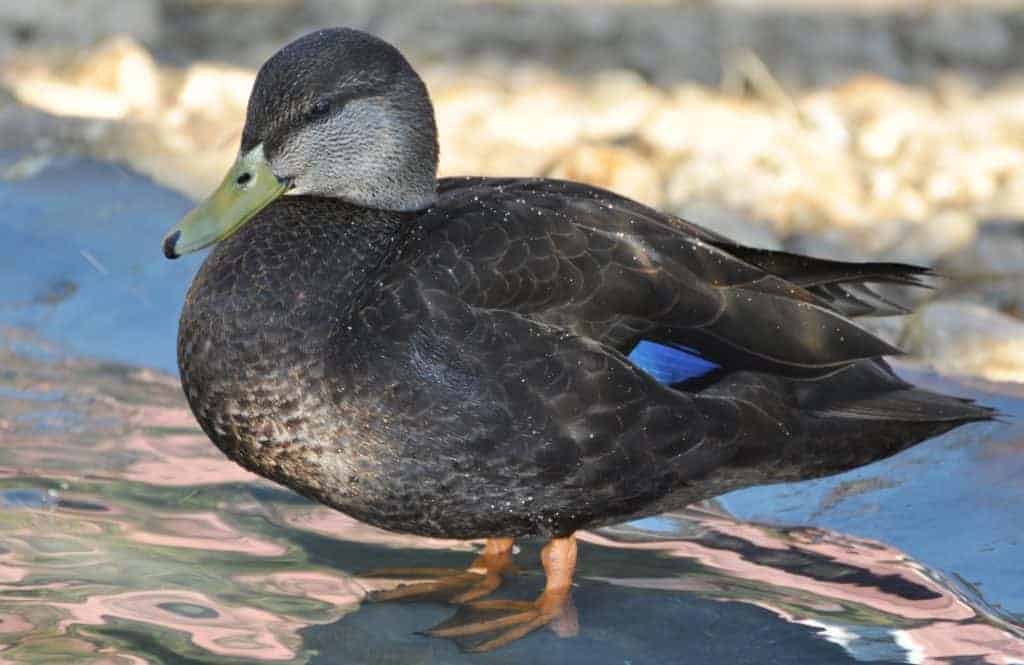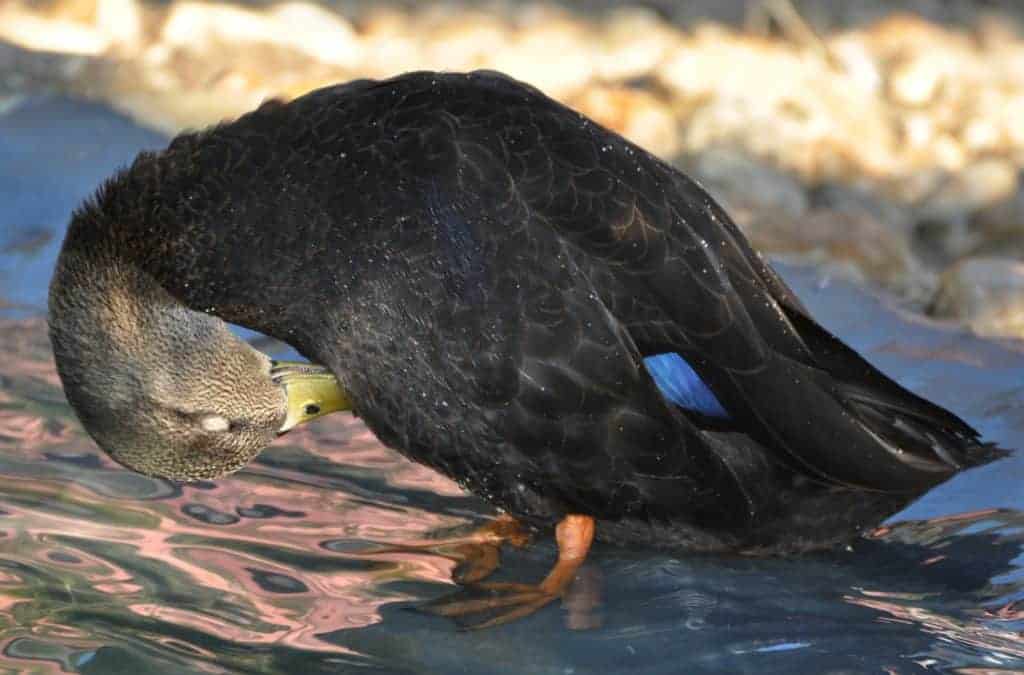American Black Duck

It is the bold assertion of early historians of the domestic Cayuga Duck that there may be American Black Duck blood in the heritage of this breed.
The drake does not have a tail-curl and hunters prize the Black Duck as it presents a challenge — supposedly more cunning and wily than any other North American duck.
One key identification feature of this duck is the speculum (or mirror) and its border. The border is black, with no white edge, and the speculum tends to have a more purple hue than that of the Mallard Anas platyrhynchos. The Mallard, and many of the domestic breeds descended from it, have a distinct white edge around the black. Closely related, both subspecies of the Mottled Duck Anas fulvigula share the lack of white bordering the speculum.
Anas rubripes
Not really black but dusky, wild American Black Ducks are known to frequently interbreed with Mallard Anas platyrhynchos. It would appear that the genetic differentiation between the two species is gradually diminishing. There are still large numbers of these ducks, mostly in the eastern half of Canada and the United States. They breed in the north and tend to winter further south once water ices over. Slightly bigger than Mallard, they seem to be more hardy and tolerant of freezing conditions.

American Black Ducks are found in various aquatic habitats and seem to prefer brackish waters. They feed on seeds, leaves, stems and roots of water plants and also enjoy more invertebrates than Mallard.
The American Black Duck nests concealed in vegetation, tree cavities or forks, lined with plant material and down. If the clutch fails, they will attempt to breed again. The clutch is 7–12 creamy or greenish eggs, which are incubated for 26 to 29 days. The drake departs shortly after incubation starts and the duck raises the brood alone. She stays with her brood until they fledge.